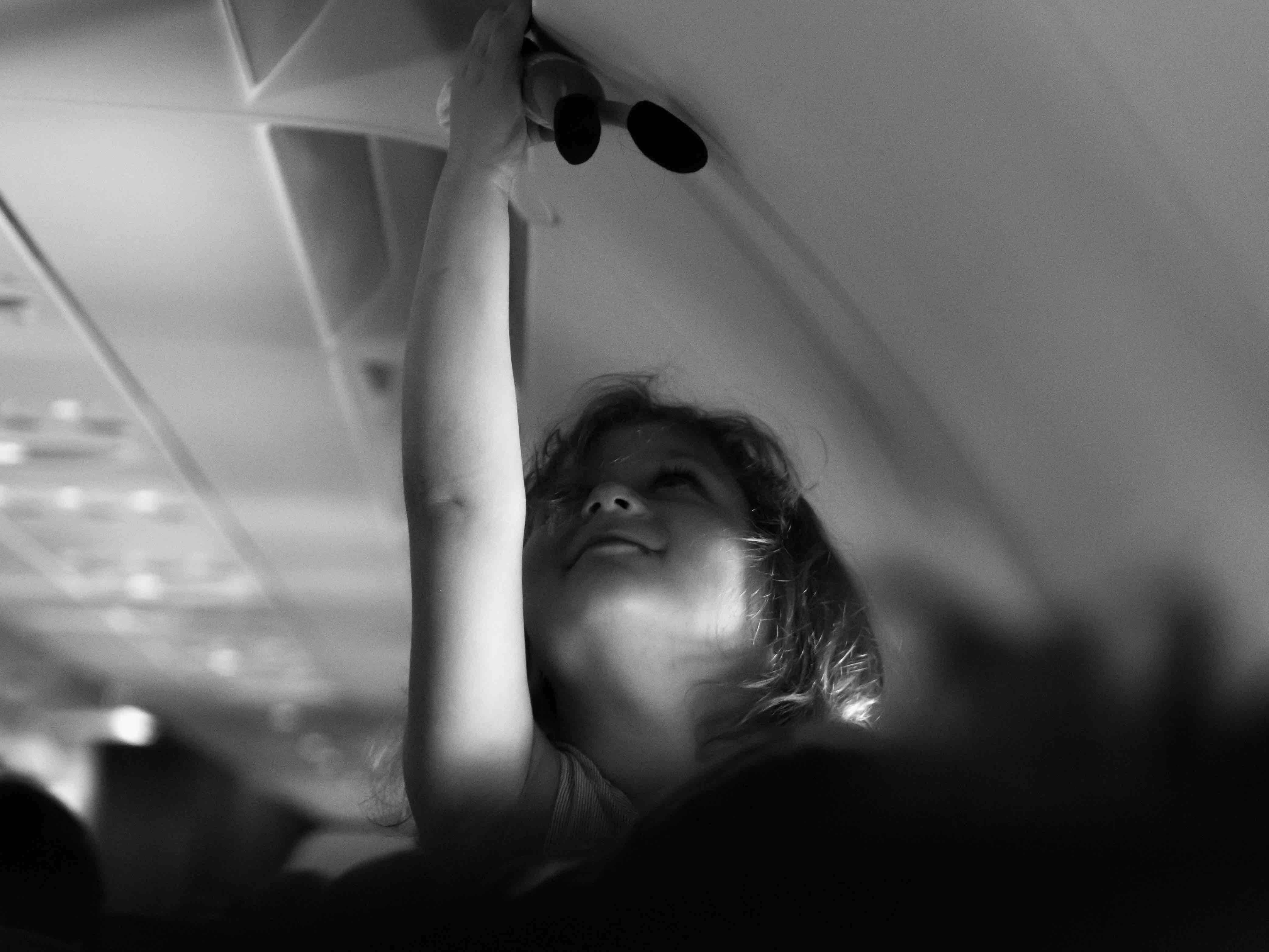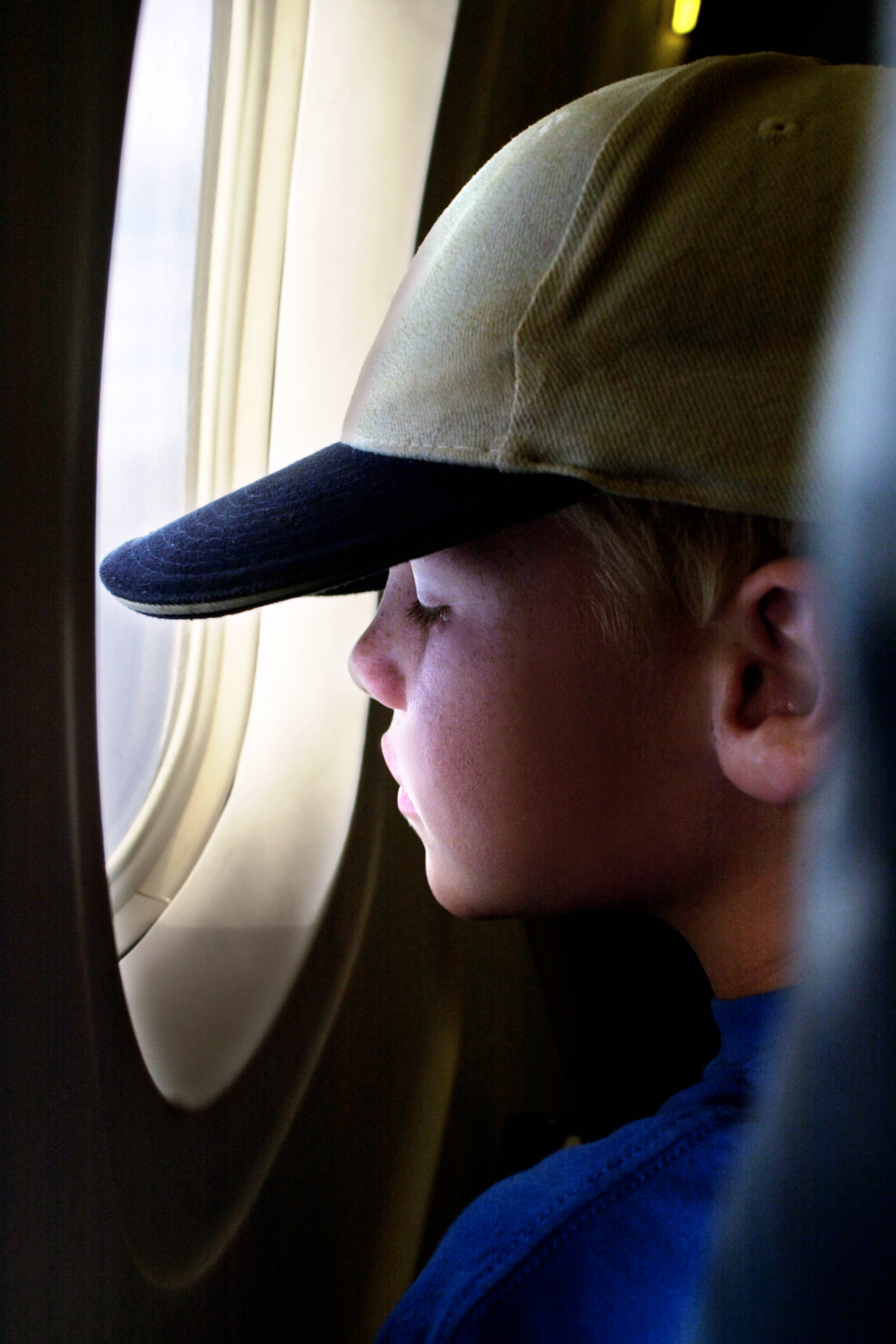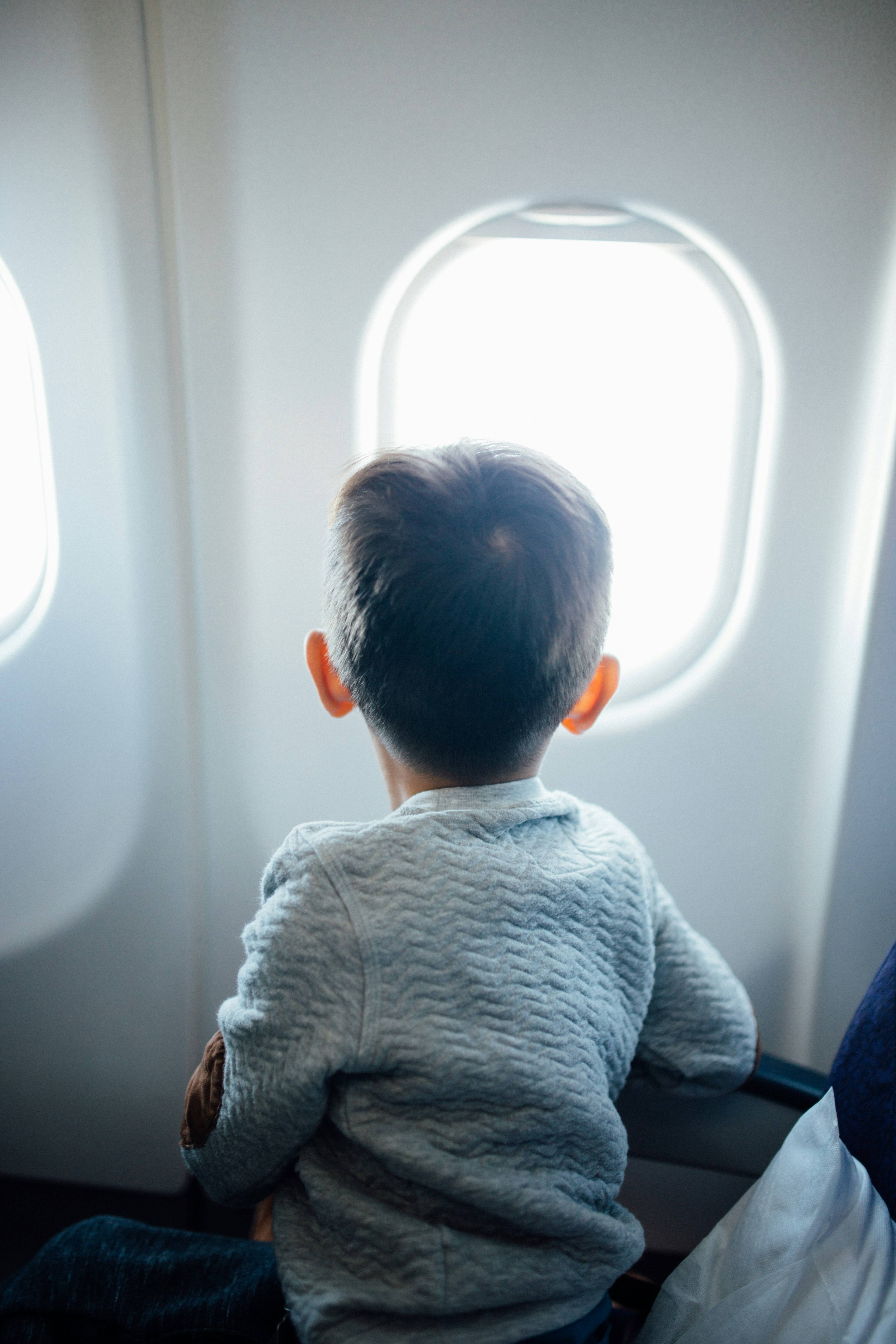Flying Checklist
There's a long list of things you need to keep in mind before you take a flight. As a frequent flyer with countless hours of my butt in an airplane seat, I've come to (mostly) master the process of preparation. Whether you're jetting off for a well-deserved vacation or a crucial business trip, having a reliable checklist can make all the difference.
Vacations and traveling are incredibly exciting (if not at times rustrating) for most people, myself included. However, I’ve always found packing for flights to be less fun, especially with the second-guessing of making sure you don’t forget something important. If you've ever had to turn back home because you left something essential behind, you'll know exactly what I mean. Believe me, there’s nothing worse than realizing you’ve forgotten something essential when you’re already at the airport (been there at least once).
This travel checklist, based on my own experiences and further research, will help you with useful vacation packing tips and other guidelines for a smooth and productive trip.
#1 Print out your Travel Documents
I've learned that a day before the flight is the best time to pack all your important documents. This includes your passport, air ticket, and any other travel documents. Double-checking that all the personal information on these documents is correct has saved me from more than one near-disaster.
Personally, I always print out copies of my travel documents and keep a set in my luggage and another with a trusted friend or neighbor back home. This extra precaution has saved me from potential disasters more than once. I’ve found that having these backups gives me peace of mind, knowing that even if something goes wrong, I’m still covered.
#2 Research Your Departure & Destination Airports
Airports can be confusing, and not being able to easily park, get to your terminal, get through the right security checkpoint, and on to your gate can cause delays and even a missed flight. Over the years, I’ve developed a habit of researching the airports I’ll be using. Some, like San Francisco's SFO or Seattle's SEATAC, are easier to navigate. However, others, like Dallas DFW or Denver DEN, can be more challenging due to the need to take trains or endure long walks.
Knowing in advance which terminal you will be departing from and arriving at has often helped me breeze through airports without unnecessary stress. This knowledge has become a small but essential part of my travel routine.
Also, it’s crucial to get familiar with your destination. I always check the airport status and weather forecast before packing to make sure I’m prepared for the conditions I’ll face. Plus, understanding local transportation options, tourist spots, and even the layout of the airport can save you a lot of time and hassle. I’ve been caught off guard before by unexpected weather or complicated airport layouts, and it’s not an experience I’m keen to repeat!
#3 Determine the Itinerary
If you want to have a smooth trip, then it is better to plan a travel itinerary for your trip. I can’t emphasize enough how much easier my trips have been since I started outlining my daily activities. Having a clear plan of where I want to go each day ensures that I make the most of my time.
By investing the time now to put together an itinerary, you save time for more fun at your destination. This can maximize time and productivity, making your trip more fulfilling. I’ve found that when I know exactly what I’m doing each day, I can relax and enjoy the journey more.
#4 Ensure Accommodations Beforehand
Before leaving for your destination and before boarding a flight, make sure that you have a place to stay at your destination. Pre-book all your hotels and accommodations in advance. I always make sure to double-check my bookings, especially during peak travel seasons when accommodations can fill up quickly.
Also, look for amenities like shops, a gym, Wi-Fi, and more when booking accommodation. These small details can significantly enhance your stay. On one trip, I forgot to check if the hotel had Wi-Fi, and it made my work-related tasks much more difficult. Since then, I always make sure to confirm these details ahead of time.
If you have an early flight, consider staying the night before at a nearby (or splurge for on on-site) airport hotel. You wake up and only have a short shuttle bus or walk to checkin.
#5 Meet With Your Doctor before Leaving For Destination
Booking an appointment with your doctor before your trip is a step I never skip. It ensures that my health is in check and that I’m healthy enough to travel. Plus, asking for an extra prescription if necessary has been a lifesaver, especially when traveling abroad where getting a refill can be difficult.
I always pack enough medication for the trip, plus an extra dosage for more than two days. And, of course, I carry my prescription papers and medical documents with me. This has saved me a lot of trouble during unexpected delays or when I needed an emergency refill abroad.
#6 Prepare Your Wallet
Take enough cash and change for you to pay for meals and cab fares at your destination. Also, if you are traveling to a new country, then change currency on time to have enough money with you (I always get cash in local currency at the arrival airport's ATMs). I’ve been caught off guard before by not having enough local currency, and it’s not something I want to repeat.
It's important to know the current exchange rates to have a handle on your spending. If you are not quick with conversions, have a small cheat-sheet ready in your wallet for quick reference. This practice has kept me on budget and prevented overspending in foreign countries.
#7 Make a Travel Packing Checklist on Paper
To ensure that you have packed everything necessary for the trip, make a travel packing checklist. This will help you to pack things more efficiently and prevent leaving necessary items behind. I’ve been using a checklist for years, and it’s dramatically reduced the number of items I forget to pack.
Your list should contain the following categories:
- Attire: Clothing, footwear, and other accessories.
- Toiletries and grooming supplies: Shampoo, hairdryer, straightener, rubber bands, earplugs, eye mask, etc.
- Electronics: Laptop, camera, chargers, earphones, electric converters, adapters, etc.
- Documents: Passports, identification cards, medical prescriptions, travel insurance, etc.
- Others: Medication, extra eyeglasses, antibacterial handwash, debit cards, credit cards, etc.
#8 Acquire Items Needed For Your Travel Trip
Depending on your destination, you may need to buy a few things, including weather-appropriate clothes, travel-sized toiletries, and new luggage. Over time, I’ve learned that investing in good quality travel gear pays off in the long run. It’s always better to be over-prepared than underprepared, and having the right gear has made my travels much more comfortable.
#9 Contact Your Airline for Information on Baggage Requirements
Different Airlines offer different baggage guidelines, so it will be best to inquire about baggage requirements from your Airline. Check the prescribed sizes and weight limits for carry-on and check-in luggage. Find out the policies of Airlines for carry-on baggage. Also, look for prohibited and allowed items. This will save you from unnecessary trouble before boarding.
I’ve found that being clear on these rules ahead of time not only helps avoid extra fees but also reduces stress at the airport. There’s nothing worse than having to repack your bags in front of the check-in counter!
#10 Find Suitable Luggage and Locks
Luggage with wheels is easy to roll and easy to carry while traveling. Also, try to select luggage that is light in weight and easy to carry. The luggage needs to be easy for you to transport, but also durable at the same time. Trust me, a good suitcase makes all the difference when you're rushing through a crowded airport.
After years of travel, I’ve come to appreciate the importance of good luggage. On more than one occasion, a sturdy suitcase with wheels has saved me from a lot of hassle. Lightweight but durable luggage is key—especially if you’re carrying it for long distances.
#11 Leave Instructions for People at Home
This is an important part of every vacation checklist that should not be forgotten. Make a written list for your roommate, friend, or family members. The list may include important chores, dates, instructions regarding pets, and many other things.
Also, do not forget to mention your contact information where your friend or family member can call you in case of any emergency. This step provides peace of mind, knowing that everything at home is taken care of. I’ve found that leaving detailed instructions not only ensures everything runs smoothly at home but also helps me relax more on my trip.
#12 Get Updates on your Flight
Prior to leaving for the airport, be sure to check the status of your flight to give you a better idea if it will be on time or delayed. You can track all flights globally using the Flight Tracker provided here. I've learned that a little advanced notice can help you avoid unnecessary stress and make alternative arrangements if needed.
There’s nothing more frustrating than arriving at the airport only to find out your flight is delayed or canceled. I always make it a point to check the status of my flight before I leave for the airport, which has saved me a lot of wasted time.
Vacation Packing Tips
If you are going on vacation, then the following vacation packing tips will help you in many ways:
- Choose clothes with plain fabrics rather than prints so that you can easily match them with other accessories.
- Bring comfortable and durable footwear with you for visiting sight-seeing and shopping. On one trip, I packed some new shoes without breaking them in first—big mistake! Now, I always make sure my footwear is well-worn and comfortable.
- Pack clothes according to your planned activities and events at the destination. Also, consider the weather and climate to pack clothes accordingly.
- Bring travel-sized toiletries with you. Store all liquids in resealable plastic bags.
- Utilize the shoes space to store socks, toiletries, or other small items.
- Store footwear in fabric shoe bags or old socks, to keep them from spoiling your valuable clothes.
- Always keep valuables and travel documents in your hand bag, never in the checked luggage. This tip is also applicable to necessary items such as keys, extra eyeglasses, and prescription drugs.
- Pack cameras, film, and laptops in your carry-on luggage to avoid unwanted damage during the check-in process.
- If traveling overseas, remember to bring electrical adapters for your electronics and other devices. I’ve had a few trips where I forgot to pack the right adapters, and it made charging my devices a real headache.
- Don't forget to bring your chargers or extra batteries.
- Pack a collapsible bag. This will be very useful for carrying extra items on your trips back, such as shopping acquisitions or dirty laundry.
- Do not bring expensive jewelry or any irreplaceable family items with you on the trip. Leave all your extra credit cards, library cards, and other things in your wallet that you will not be using.
- Lock away all valuables in a safe place.
I hope the above-mentioned flying checklist will help you plan a safe and fun trip. These steps have personally saved me a lot of time and trouble over the years, and I hope they do the same for you. Happy travels!
FAQ: Flying Checklist
Find more help here for your journey through the airport




